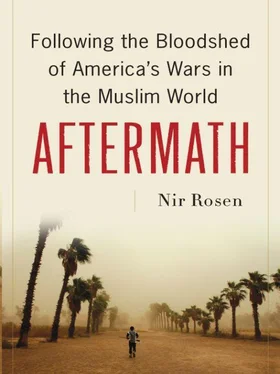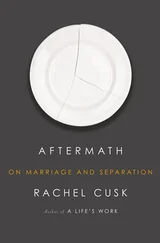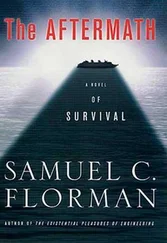“This house belonged to a [Sunni] terrorist,” said Haidar, who joined the Mahdi Army soon after the American invasion. “He became a takfiri and was killed. Then the house was given to the Sadrist Current. There were a lot of takfiris here, and they committed a lot of killings in the area. Then the Mahdi Army came and finished them. There are no Wahhabis in the area anymore.” Three other families also shared the house; the home received about thirty minutes of electricity a day from the national grid, so they paid to receive more from a local generator.
“I wish peace will be upon everyone,” Haidar’s mother said. “We are getting tired. We just need a decent house to live in and decent food to live off of, and that America gets out so the Sunnis and the Shiites get back together without any differences. I wish for my sons to get an education and to be teachers or lawyers, and for the girls to grow up and get marred with a good future. I am a believer in God, and to die in dignity is better than another kind of death.”
“I don’t think I’m able to go back,” Haidar said of his old home, “because the tribes there now are against Shiites.” Although the Anbar province was more stable because of the powerful Awakening militia there, Haidar and his family, like other Shiites, did not feel reassured. “The Awakening are the same,” he said. “They were with the terrorists before, and they are the Awakening.” He told me he would like to take revenge for his brother’s death.
Haidar took me to the nearby Saddah area on the outskirts of the city, where hundreds of impoverished Shiite Iraqis, many of them displaced by Sunni militias, lived in makeshift homes. There were about three hundred such homes in the area, with ten to twenty residents in each one. Locals complained that they were harassed by the Americans. The only help they received was from the local Sadrists.
Jasim Muhamad was an Iraqi army veteran who was wounded during the American invasion of 2003. He and seventeen of his relatives, including eight children, now lived in three adjacent shacks. They were from Haswa, near Falluja. They said that no one had returned to Haswa since some women went there to transfer their children’s school papers to Baghdad and were killed. “No one from the family tried to get us back to our homes,” said Jasim’s wife. “If I go back, I will get killed.” Up to three thousand families from Haswa were displaced, they told me, their homes looted. The Iraqi army had told them to leave Haswa because it was unsafe. They believed that the Awakening members were the ones who had expelled them and that these same militiamen would threaten them if they dared to return.
Previously Sunnis and Shiites had lived together in the area. Jasim and his family blamed outsiders for instigating the problems. They received a letter from the Tawhid Brigade, stating that because Sunni families had been killed and expelled in Baghdad, infidel families (meaning Shiites) had five days to leave or face death. Those who ignored this warning were killed, including Jasim’s brother-in-law, whose body was never found.
The Ministry of Displacement provided Jasim and his family with beds, blankets, and a small kerosene cooker, but nothing else. After one year of trying, they succeeded in transferring their ration cards from the Public Distribution Service, but they received rations only every few months, and only a small share of what they used to receive. The Sadrist movement provided them with food such as rice, flour, and sugar. There was no running water in the area, so they relied on a nearby well. Although they had been connected to the national power grid, they rarely got electricity. They had to break apart a bed to use it for firewood because they had no cooking gas or kerosene. On some days they had no food. Jasim was unable to register for his pension as a wounded veteran because the ministries were not functioning properly.
Jasim’s brother found an occasional job working in the sewage system, and he would sometimes bring money to the family. Only their older children attended school. The family members had voted in the most recent elections for the Shiite Iraqi Alliance list, but they complained that they had not received anything from the government, not even security. “My message to the American people after five years,” said Jasim’s wife: “They destroyed us and didn’t help us, they didn’t reconstruct the country, they even added more destruction to us. The days during Saddam were better. Now there is killing and nothing good. Before there was security and life was going on easily, while now there is nothing. Now things are getting worse and worse, killing in the streets, and there is no life. Strangers come to our homes and threaten us. I feel life is miserable now and our country is destroyed.”
The neglect in Sadr City and other neighborhoods on the outskirts of Baghdad was shocking. But Washash, in central Baghdad, was stark for its contrast to the upscale Mansour district adjacent to it. Of course, much of Mansour was deserted when I visited because of Al Qaeda and the Mahdi Army, but the district’s clothing stores and restaurants were once packed, its shopping boulevard and ice cream parlors open until late at night. The streets of the majority-Shiite Washash remained unpaved dirt, many flooded with water or sewage. It was quiet and removed from the nearby bustle.
Washash was a staging point for Mahdi Army attacks against Al Qaeda and forays into the Mansour district. It was one of the few Shiite neighborhoods I saw that was surrounded by concrete walls, with only one road left open for cars, guarded by Iraqi soldiers. Elsewhere a few narrow openings between the concrete blocks allowed pedestrians to enter one at a time. About five thousand families lived in Washash, but most of its Sunnis had fled or were slaughtered, and the Mahdi Army men there were notorious, even among other Mahdi Army units, for their brutality. In Washash I saw more posters and banners in honor of Muqtada and his father than anywhere else in Baghdad.
When I first visited Washash in April 2003, sewage flooded the streets and there was a thriving arms market nearby. About sixty thousand people lived in an area not much larger than one square kilometer. When American vehicles approached, the weapons dealers would hastily conceal their wares. The revenge killings started in Washash soon after Baghdad fell, and it didn’t take long for the murders to take on a sectarian tone. In October 2003 three Sunnis were killed in Washash: Sheikh Ahmed Khudeir and his brother Walid Khudeir were killed along with a teenage assistant as they walked home from the Sunni Washash Mosque after the morning prayer. The three were riddled with bullets. Locals believed militiamen from the Badr Corps had killed them. Hospital officials reported seeing many similar cases in the area. In August 2004 a police chief and a patrolman were killed in an explosion in Washash. In December 2004 several members of a Sunni Salafist group in Washash were killed, and Sunni gunmen tried to kill a Shiite sheikh called Razaq; they missed Razaq but killed his wife and wounded his son, who remained paralyzed. Following the killings, Sunni and Shiite clerics issued a joint edict banning sectarian fighting. By the summer of 2005, sectarian violence was a common occurrence. Sectarian violence targeting Sunnis was so bad that in July the Sunni waqf (endowment) complained about the targeting and arrest of Sunnis.
Washash and the nearby Iskan were located in northeast Mansour on an important sectarian front line between Shiite-controlled Hurriya and Kadhimiya and Sunni-controlled Khadra, Jamia, Adil, and Mutanabi. In October 2006, during Operation Together Forward II, American soldiers raided a house in Washash while searching for a death squad and found documents recording the cleansing of Sunnis from the area. The documents included a list of nearly seventy homes where Sunni families had been expelled and Shiite families were brought in to replace them. There was also a list of “good” families who would not be expelled. American soldiers discovered letters threatening Sunnis as well as DVDs with the same message from the Mahdi Army, with images of exploding houses and threats to kill a male of the house. That month Washash notables asked the Iraqi government to intervene in a crime wave that had led to the discovery of sixty corpses and the threatening of many families by militias. In November a journalist working for the state-run Al Sabah newspaper was killed in Washash. In December, gunmen assassinated a news editor for an Iraqi radio station as he left his home to go to work. In April 2007 four women accused of being informants for the Americans were killed in Washash.
Читать дальше











